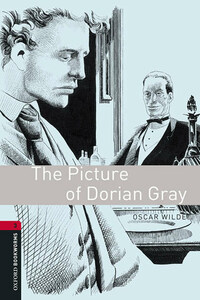![]()
Great Clarendon Street, Oxford 0X2 6DP
Oxford University Press is a department of the University of Oxford
It furthers the University’s objective of excellence in research, scholarship,
and education by publishing worldwide in
Oxford New York
Auckland Cape Town Dar es Salaam Hong Kong Karachi
Kuala Lumpur Madrid Melbourne Mexico City Nairobi
New Delhi Shanghai Taipei Toronto
With offices in
Argentina Austria Brazil Chile Czech Republic France Greece
Guatemala Hungary Italy Japan Poland Portugal Singapore
South Korea Switzerland Thailand Turkey Ukraine Vietnam
OXFORD and OXFORD ENGLISH are registered trade marks of
Oxford University Press in the UK and in certain other countries
This simplified edition © Oxford University Press 2008
Database right Oxford University Press (maker)
First published in Oxford Bookworms 1989
2 4 6 8 10 9 7 5 3 1
No unauthorized photocopying
All rights reserved. No part of this publication may be reproduced,
stored in a retrieval system, or transmitted, in any form or by any means,
without the prior permission in writing of Oxford University Press,
or as expressly permitted by law, or under terms agreed with the appropriate
reprographics rights organization. Enquiries concerning reproduction
outside the scope of the above should be sent to the ELT Rights Department,
Oxford University Press, at the address above
You must not circulate this book in any other binding or cover
and you must impose this same condition on any acquirer
Any websites referred to in this publication are in the public domain and
their addresses are provided by Oxford University Press for information only
Oxford University Press disclaims any responsibility for the content
ISBN 978 0 19 479126 7
A complete recording of this Bookworms edition of
The Picture of Dorian Gray is available on audio CD ISBN 978 0 19 479098 7
ACKNOWLEDGEMENTS
Illustrated by: Nick Harris
Word count (main text): 10,245 words
For more information on the Oxford Bookworms Library,
e-Book ISBN 978 0 19 478666 9
e-Book first published 2012
‘I have put too much ofmyself into this painting.’
Through the open windows of the room came the rich scent of summer flowers. Lord Henry Wotton lay back in his chair and smoked his cigarette. Beyond the soft sounds of the garden he could just hear the noise of London.
In the centre of the room there was a portrait of a very beautiful young man, and in front of it stood the artist himself, Basil Hallward.
‘It’s your best work, Basil, the best portrait that you’ve ever painted,’ said Lord Henry lazily. ‘You must send it to the best art gallery in London.’
‘No,’ Basil said slowly. ‘No, I won’t send it anywhere.’
Lord Henry was surprised. ‘But my dear Basil, why not?’ he asked. ‘What strange people you artists are! You want to be famous, but then you’re not happy when you are famous. It’s bad when people talk about you – but it’s much worse when they don’t talk about you.’
‘I know you’ll laugh at me,’ replied Basil, ‘but I can’t exhibit the picture in an art gallery. I’ve put too much of myself into it.’
Конец ознакомительного фрагмента. Полный текст доступен на www.litres.ru














